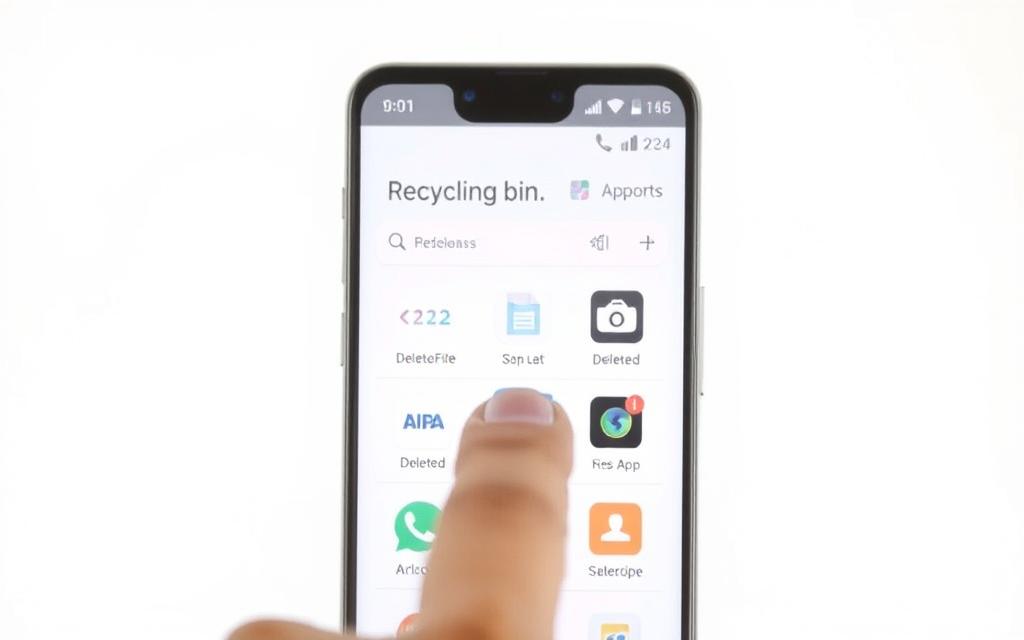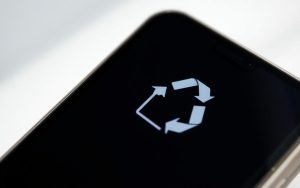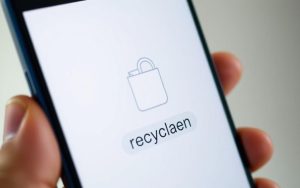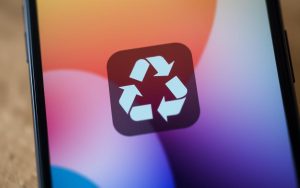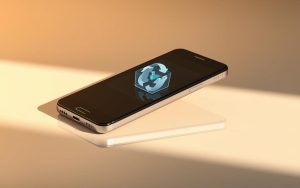Table of Contents
Managing deleted files on an Android phone differs significantly from desktop systems. Unlike a centralized recycle bin, Android relies on individual apps to handle trash folders. This decentralized approach means users must manage storage across multiple platforms.
Popular apps like Google Photos, Files by Google, and Samsung My Files each have their own trash systems. For example, Google ecosystem apps automatically delete files after 30 days. Manufacturer UIs, such as Samsung’s, may also have unique features.
Clearing app-specific trash folders not only optimizes storage but also enhances security. Permanent deletion ensures sensitive data doesn’t linger. Beyond trash management, users can explore additional storage optimization methods for better device performance.
Introduction to Android’s Recycling System
Android’s approach to handling deleted files is unique compared to traditional systems. Unlike Windows or Mac, there’s no system-wide trash folder. Instead, each app manages its own trash or deleted files. This decentralized system means users must navigate multiple platforms to clear storage.
Files by Google serves as the default file manager on most devices. It helps organize and delete files but doesn’t centralize all trash. Google services like Drive, Photos, and Gmail maintain separate trash folders. Third-party apps also manage their own deleted files independently.
One key feature is the automatic 30-day deletion policy. Files in trash folders are permanently removed after this period. This policy helps free up space but also ensures sensitive data doesn’t linger unnecessarily.
Major apps like Google Photos, Drive, and email clients have their own trash systems. Manufacturer-specific implementations, such as Samsung’s My Files, add another layer of complexity. Users should be aware that text messages are an exception—deleting them is often permanent.
This decentralized approach enhances security by reducing the risk of data recovery. However, it requires users to manage trash across multiple apps. Understanding this system is crucial for optimizing storage and maintaining privacy on your device.
How to Empty the Recycling Bin in Google Photos
Google Photos offers a streamlined way to manage deleted images and videos. Unlike other platforms, it provides a dedicated trash folder where deleted files are stored temporarily. This feature ensures you can recover items within a 60-day window before they are permanently removed.
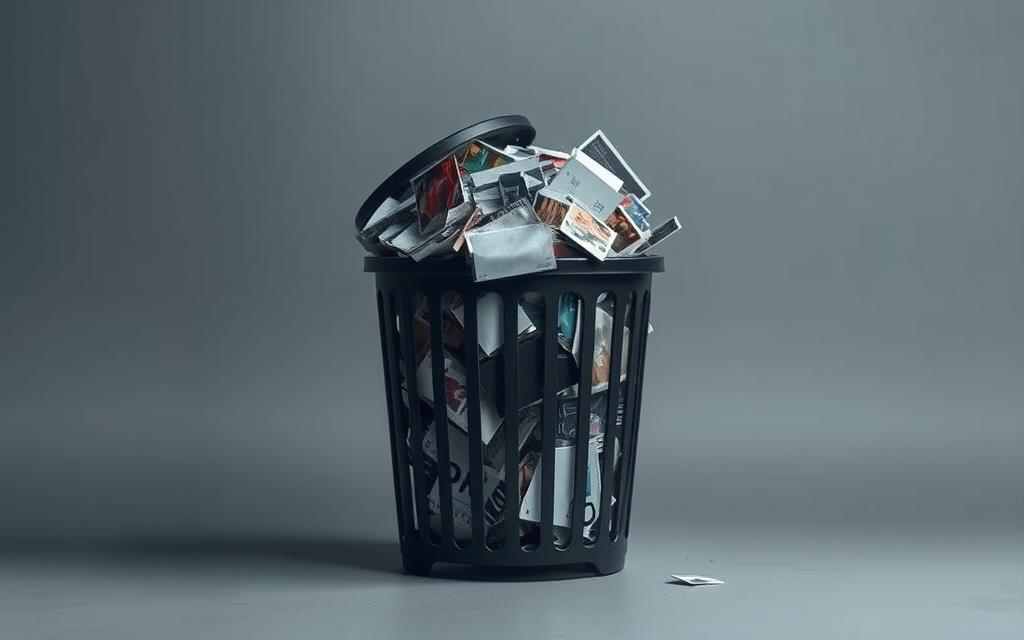
Step 1: Open the Google Photos App
Start by launching the Google Photos app on your device. Ensure you’re signed in to your Google Account to access all features. The app’s intuitive interface makes navigation simple, even for first-time users.
Step 2: Navigate to the Trash Folder
Tap on the Library tab at the bottom of the screen. From there, select the trash folder to view all deleted items. This folder contains photos and videos that can be restored or permanently deleted.
Step 3: Permanently Delete Items
To empty trash, tap the three dots in the top-right corner and select Empty Trash. Confirm your choice to permanently remove all files. Be cautious, as this action cannot be undone.
| Feature | Details |
|---|---|
| Recovery Window | 60 days |
| Storage Impact | Frees Google Account storage |
| Cloud vs Local | Cloud-synced files are affected; local storage remains unchanged |
For selective deletion, long-press on individual items and tap the delete icon. This method is ideal for removing specific files without clearing the entire trash folder. Inactive users should note that Google Photos automatically empties the trash after 60 days.
How to Empty the Recycling Bin in Files by Google
Files by Google provides a straightforward method for managing deleted items. This app is a powerful tool for organizing and clearing unwanted data. Unlike other platforms, it keeps trash files for 30 days before permanent removal. This feature ensures you can recover items if needed.
Step 1: Launch the Files by Google App
Open the Files by Google app on your device. Ensure you’re signed in to access all features. The app’s clean interface makes navigation simple, even for beginners.
Step 2: Access the Trash Folder
Tap the hamburger menu in the top-left corner. Select Trash to view all deleted items. This folder contains files that can be restored or permanently removed.
Step 3: Delete Files Permanently
To clear the trash files, tap the three dots in the top-right corner. Choose Empty Trash and confirm your choice. This action permanently deletes all items and cannot be undone.
| Feature | Details |
|---|---|
| Retention Period | 30 days |
| Storage Type | Device-specific |
| Secure Folder | Integrated for Samsung devices |
For selective deletion, long-press on specific items and tap the delete icon. This method is ideal for removing unwanted files without clearing the entire folder. Note that once deleted, recovery is not possible.
Files by Google also offers storage visualization features. These help you identify and manage large files efficiently. Troubleshooting tips are available for users experiencing missing files or other issues.
Clearing the Trash in Samsung My Files
Samsung Galaxy devices offer a distinct method for managing deleted files. Unlike Google’s ecosystem, Samsung uses the My Files app as its default file manager. This app provides a centralized location for handling trash and optimizing storage on your phone.
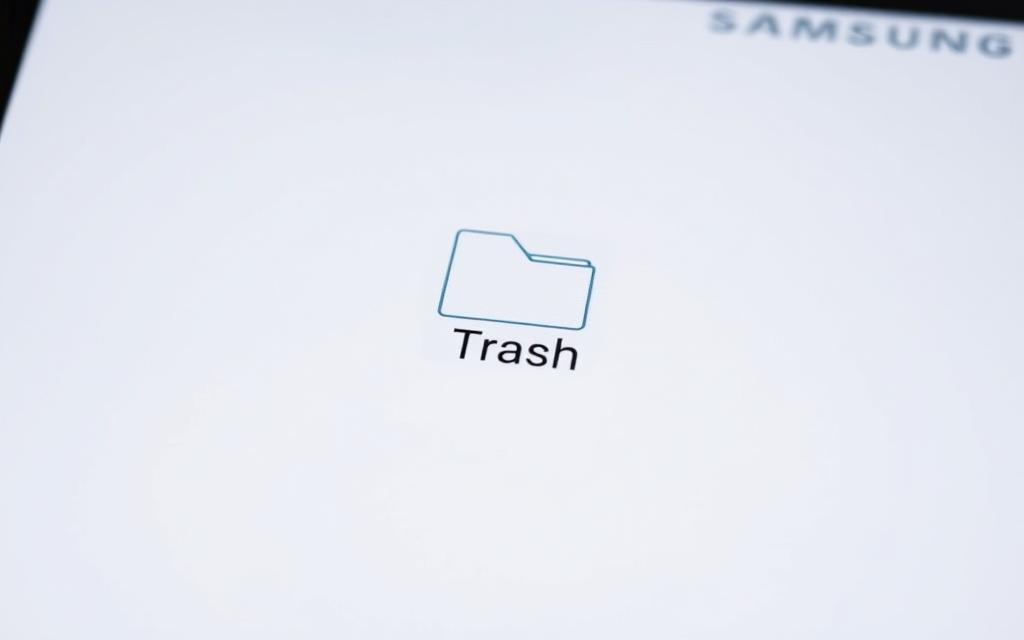
To access the trash folder, open the My Files app and navigate to the Menu section. Select Trash to view all deleted items. This folder retains files for 15 days before automatic removal, giving users time to recover accidentally deleted data.
For permanent deletion, tap the three dots in the top-right corner and choose Empty Trash. This action clears all items immediately. Alternatively, long-press specific files and tap the delete icon for selective removal.
| Feature | Details |
|---|---|
| Retention Period | 15 days |
| Navigation | Menu > Trash |
| Deletion Options | Empty Trash or selective deletion |
Samsung’s My Files app coexists with Files by Google, allowing users to choose their preferred file manager. However, manufacturer-specific behaviors, such as the 15-day retention policy, may differ from Google’s 30-day rule. Users with S Pen devices can also navigate the app using the stylus for added convenience.
Understanding these features ensures efficient storage management and enhances security by permanently removing sensitive data. Always double-check before emptying the trash folder to avoid accidental loss of important files.
Other Ways to Free Up Storage on Android
Optimizing storage on your device goes beyond just deleting files. Android offers multiple strategies to reclaim space and enhance performance. From clearing cache to leveraging cloud solutions, these methods ensure your device runs smoothly.
One effective way to free up storage is by clearing app cache. Navigate to Settings > Apps > Storage and select Clear Cache. This process can free between 500MB and 1GB, depending on the number of apps installed. However, be cautious—cache regenerates over time, so regular maintenance is key.
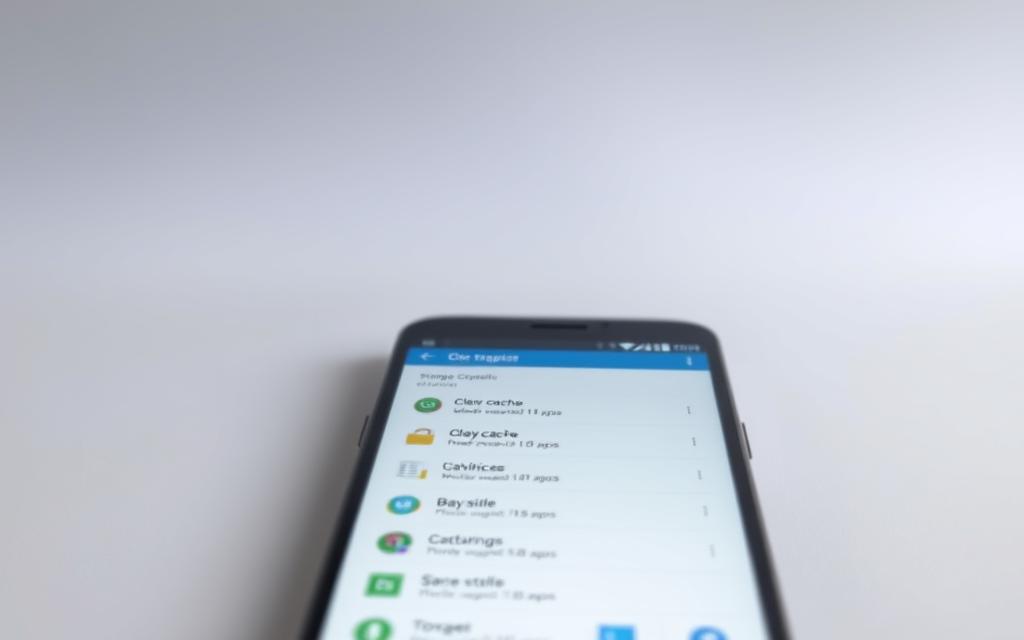
Managing app-specific data is another crucial step. Apps like WhatsApp and Discord often store large media files. Regularly review and delete unnecessary media to reclaim significant space. Built-in storage managers, such as Files by Google, can help identify and remove redundant files efficiently.
Cloud storage integration is a game-changer for managing data. Services like Google Drive or Dropbox allow you to offload files, freeing up local storage. Automated syncing ensures your data remains accessible while keeping your device clutter-free.
- Use storage analyzer tools to identify large files and duplicates.
- Set up automatic cleaning schedules for apps like Google Photos.
- Compare factory reset versus selective deletion for comprehensive storage management.
- Explore third-party apps like CCleaner for advanced optimization.
For more detailed instructions on managing your device’s storage, check out this step-by-step guide. By implementing these strategies, you can ensure your Android device remains fast, efficient, and clutter-free.
Conclusion
Efficiently managing your device’s storage involves more than just deleting files. Regularly clearing trash folders in apps like Google Photos, Files by Google, and Samsung My Files ensures optimal performance. This practice not only frees up space but also enhances security by permanently removing sensitive data.
Combining trash management with cache cleaning and cloud storage integration maximizes storage efficiency. A monthly maintenance schedule helps prevent clutter and keeps your android phone running smoothly. Manufacturer-specific best practices, such as Samsung’s 15-day retention policy, add another layer of customization.
By adopting these strategies, you can protect your data and maintain a well-organized device. Ecosystem-wide trash management ensures no unnecessary files linger, safeguarding your privacy and optimizing performance.
FAQ
Can I recover files after emptying the recycling bin on Android?
Once you permanently delete items from the recycling bin or trash folder, recovery is usually not possible. Always double-check before clearing trash files.
Does emptying the trash in Google Photos free up storage space?
Yes, permanently deleting items from the trash folder in Google Photos frees up storage on your device or Google account.
How do I access the trash folder in Files by Google?
Open the Files by Google app, tap the hamburger menu in the top corner, and select “Trash” to view deleted files.
Can I delete multiple files at once in the recycling bin?
Yes, most apps like Google Photos and Files by Google allow you to select multiple items and delete them permanently in one step.
What happens to files in the trash folder after 30 days?
In apps like Google Photos, files in the trash folder are automatically deleted after 30 days if not manually cleared earlier.
Is there a way to clear cache while managing trash files?
Yes, apps like Files by Google offer options to clear cache and manage trash files, helping you optimize storage space.
Can I empty the recycling bin on Samsung devices?
Yes, use the Samsung My Files app to access the recycle bin and permanently delete items to free up storage.


